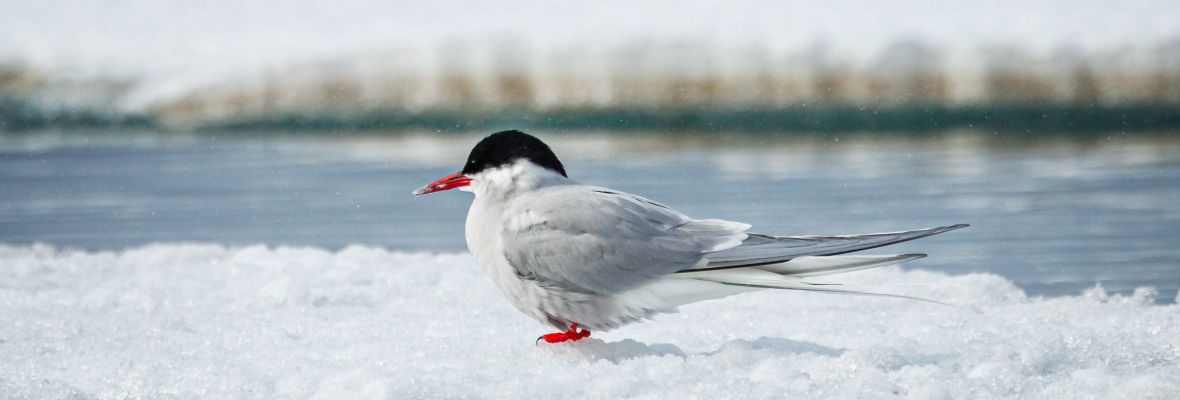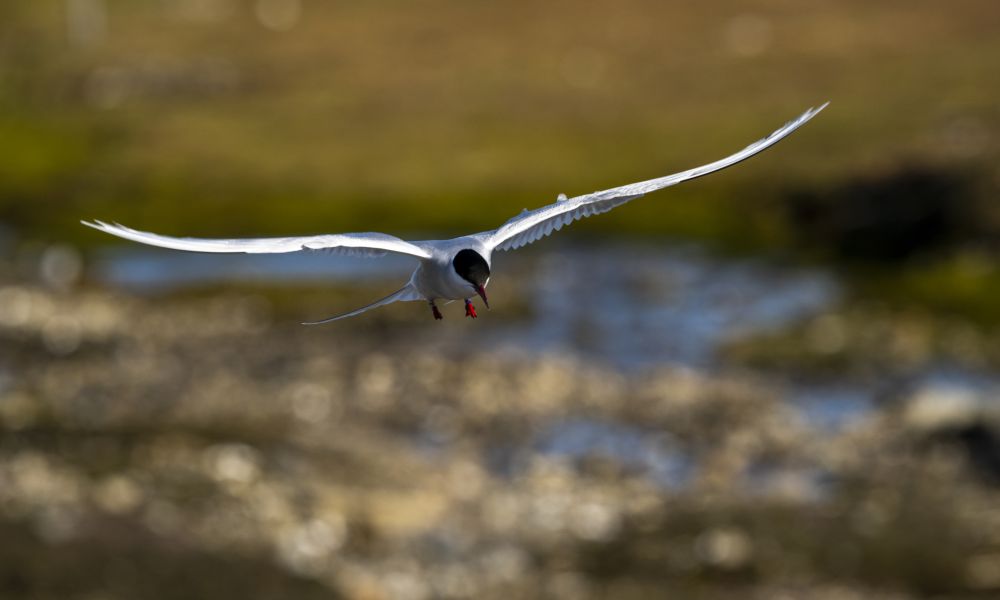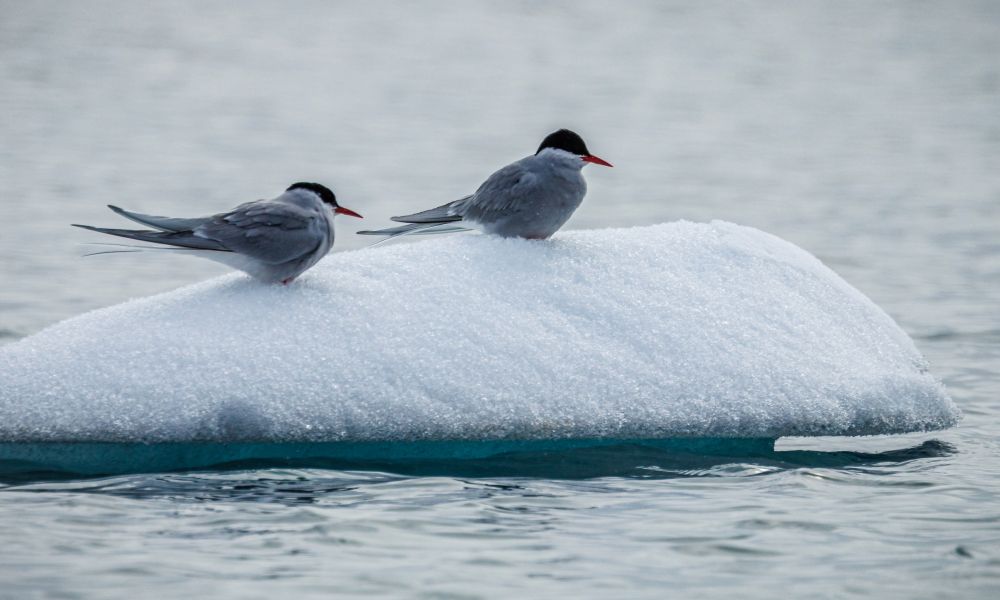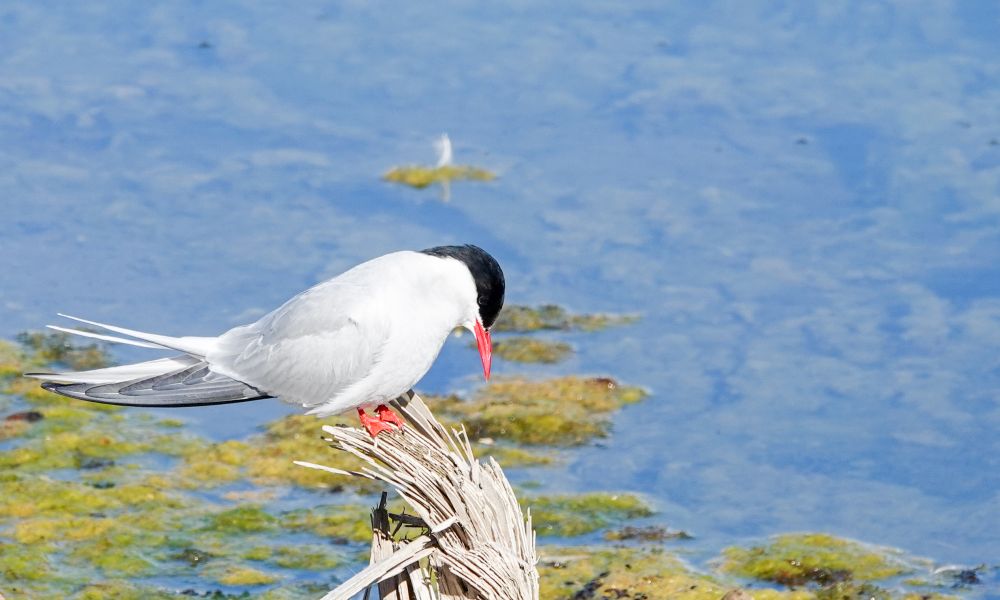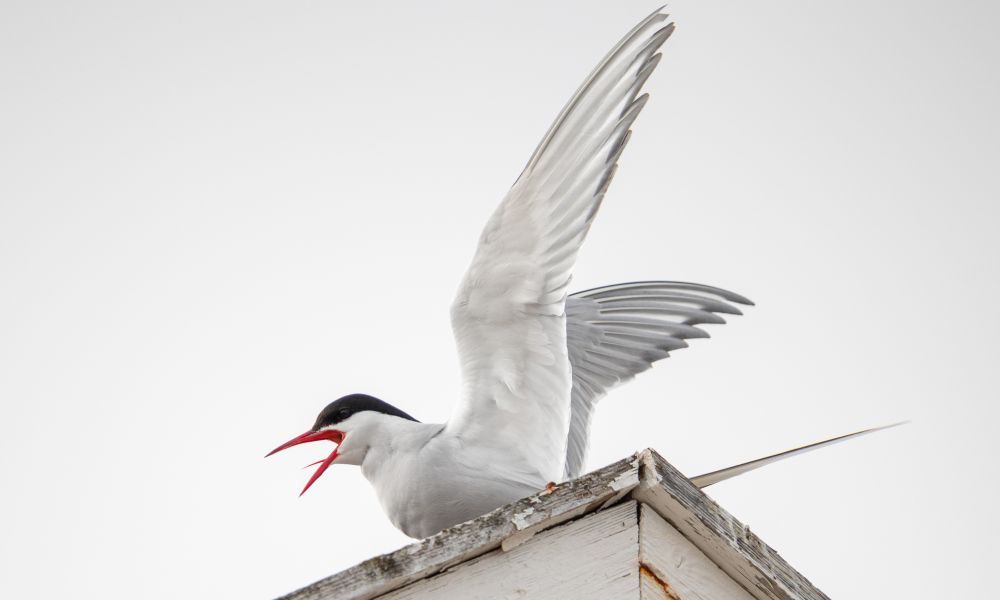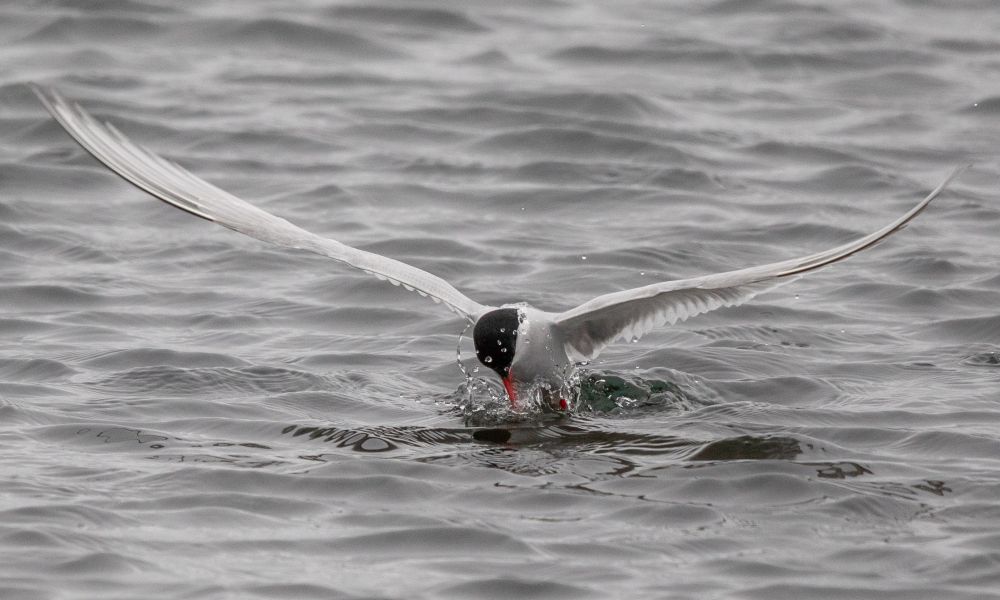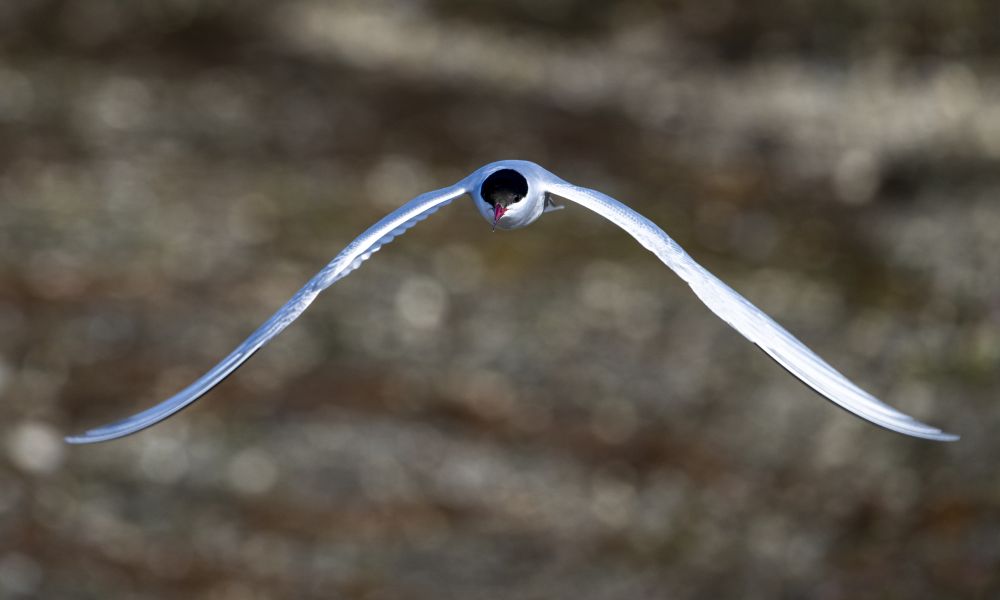What Do They Look Like?
The Arctic tern is a small tern species with both male and female looking alike. Some of their main characteristics are having a sharp red bill, red legs, a light grey back, a whitish belly, and a black cap. The tail is deeply forked, and the projecting outer tail feathers extend well beyond the wingtips when the bird is perched with its wings folded. The legs are short and orange-red. Moreover, adults range from approximately 35 cm in length to 100-125g in weight.
Where Does the Arctic Tern Live?
Since they have a circumpolar distribution, Arctic tern habitat ranges from where they breed (Arctic and sub-Arctic) to where they spend winter (Antarctica). Moreover, due to their nesting and breeding behaviours, they prefer coastal areas and flat islands with little vegetation.
Where Does the Arctic Tern Migrate To?
Surprisingly far from one another, their migration can range from the Arctic to Antarctica. When breeding, it is commonly seen on islands and coastal mainland areas of the High Arctic, as well as the North Pacific and North Atlantic south to 50 °N. In the eastern Atlantic, it breeds in Greenland and Iceland, the British Isles, the Baltic Sea, Norway (including Svalbard) and the Barents Sea region. When spotted on the coasts of Svalbard, it is mostly found on the western and northern parts of Spitsbergen. To take advantage of the summer from both hemispheres, the Arctic tern bird appears during these months in Antarctica. When summer sunlight decreases in the Southern Hemisphere, Athey continue with its migration route and returns to Svalbard in late May or early June and departs again between late August and mid-September.
Why Do They Migrate?
The Arctic tern's migration path is explained by the fact that these birds follow the sun, experiencing two summers each year, one in the Arctic and one in Antarctica. They migrate to maximize feeding opportunities and reduce exposure to harsh winters. They are considered to have the longest migration route among all birds and animals, covering distances that can reach from 60 to 80,000 km (about 50,000 miles) annually between breeding and wintering areas.
What Do Arctic Terns Eat?
Arctic tern diet primarily includes small pelagic crustaceans, like krill, and small fish, such as arctic cod. In summer, their diet may also include insects.



